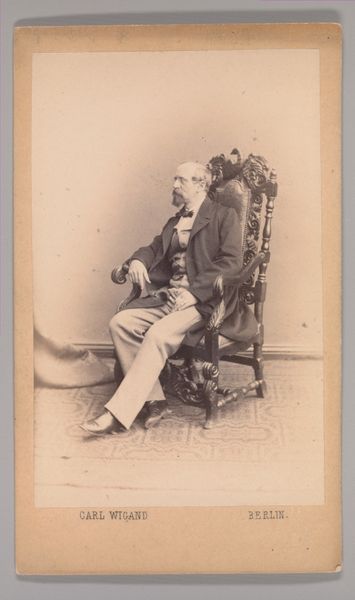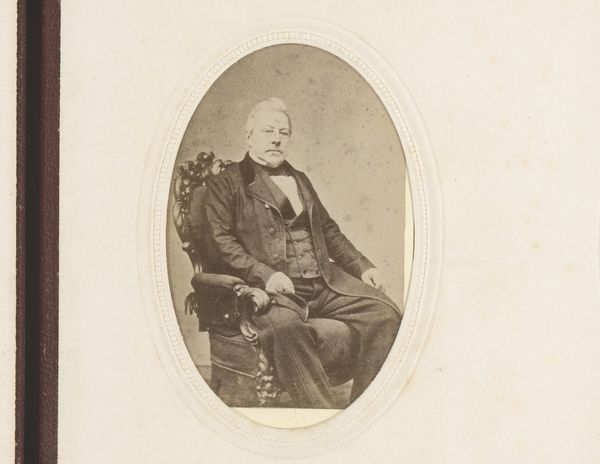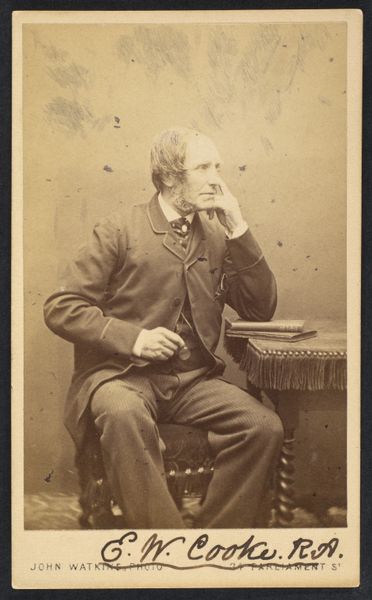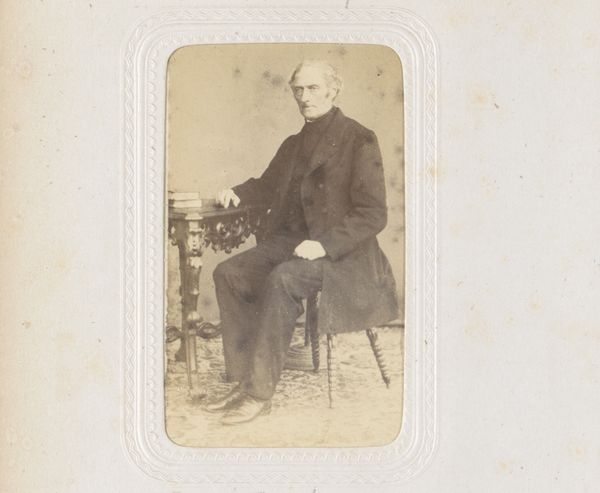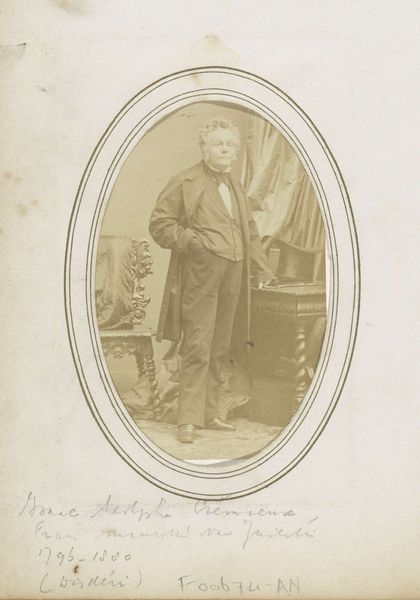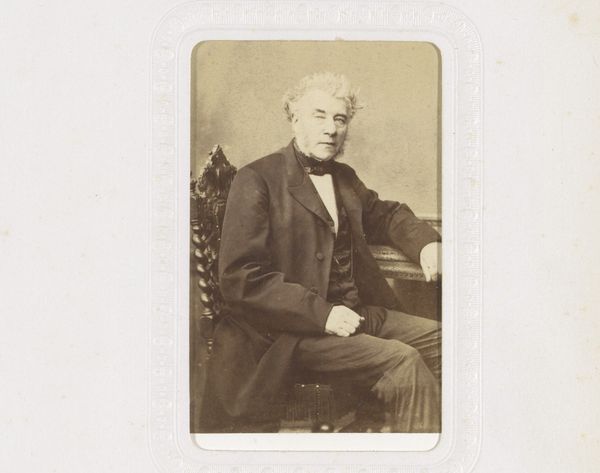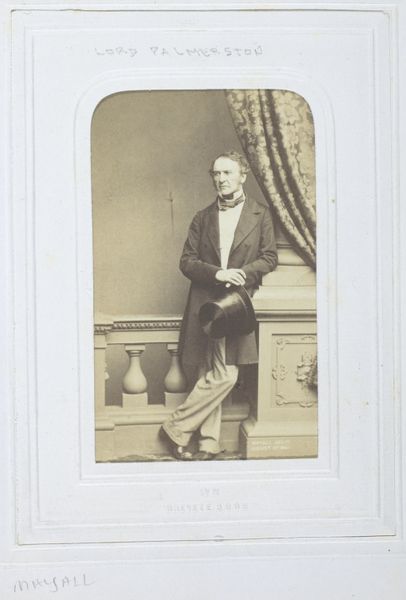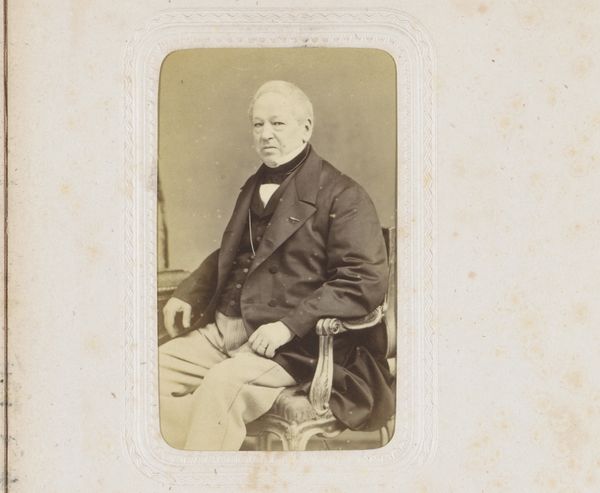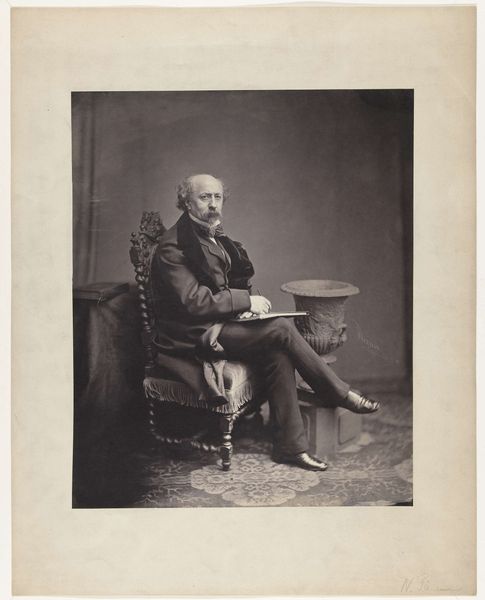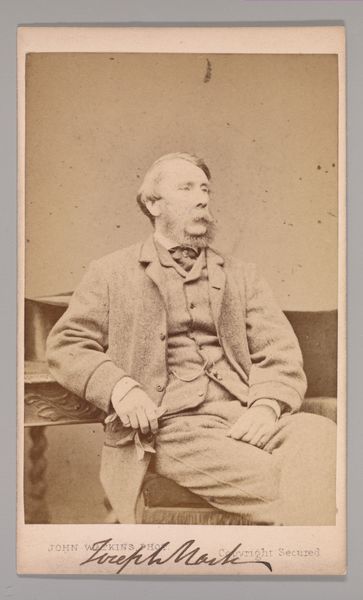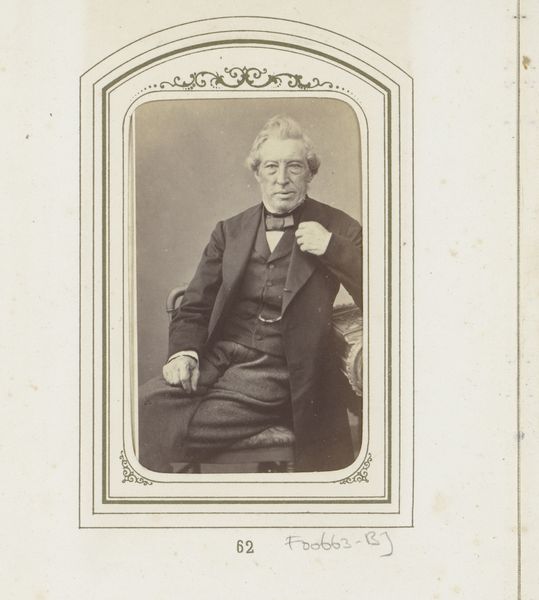
print, daguerreotype, photography
#
portrait
#
16_19th-century
#
water colours
# print
#
daguerreotype
#
photography
#
men
Dimensions: 8.8 × 5.7 cm (image/paper); 10.5 × 6.2 cm (mount)
Copyright: Public Domain
Editor: So, this is "The Earl of Derby," a daguerreotype from the 1860s by John Jabez Edwin Mayall. It’s such a formal portrait. What stands out to me is how posed and almost rigid the subject appears. How do you interpret this work within its historical context? Curator: It’s interesting that you find the pose rigid. I see a performance of power, meticulously constructed for the camera. This image emerged during a period of intense social and political upheaval in Britain. Photography, even in its portrait form, served to solidify existing hierarchies. How might the Earl’s posture and attire contribute to our understanding of Victorian ideals of masculinity and authority? Editor: Well, his clothing and serious expression certainly suggest authority, but I guess I hadn’t considered it as a conscious construction of power. So, the formality wasn’t just about aesthetics? Curator: Precisely. Think about the other visual elements, the carefully draped curtain, the ornate chair, even the book on the table – they all serve to reinforce his status. And consider what photography meant at this time. It democratized portraiture to a degree but also offered a powerful tool for projecting and perpetuating class divisions. To what extent do you think this image invites critique of, or perhaps, complicity in, such power structures? Editor: That’s a powerful idea. I initially saw it as a simple historical portrait, but understanding the social context helps me recognize the intentional message of dominance that the photographer and the sitter were trying to convey. I’ll definitely view other portraits of this era in a different light now. Curator: Exactly. By exploring these connections between visual representation, historical context, and power, we gain deeper insights into both the artwork and the society that produced it.
Comments
No comments
Be the first to comment and join the conversation on the ultimate creative platform.
